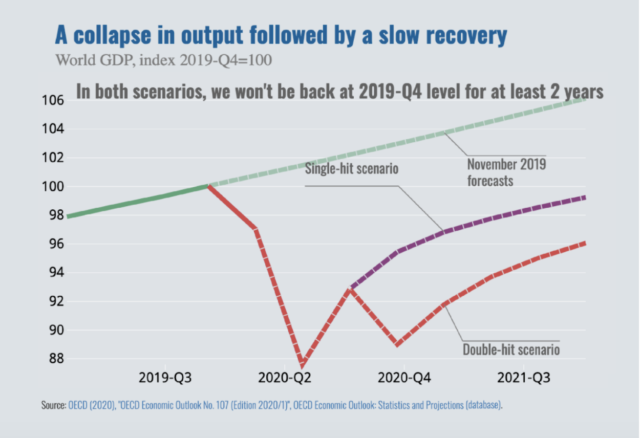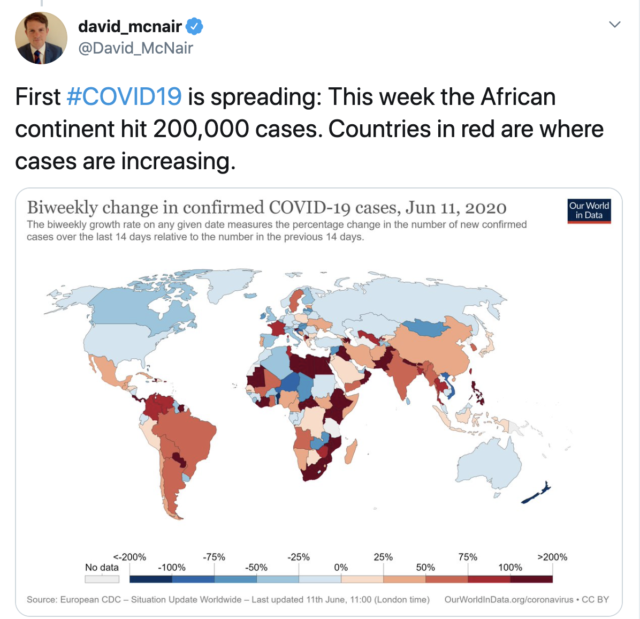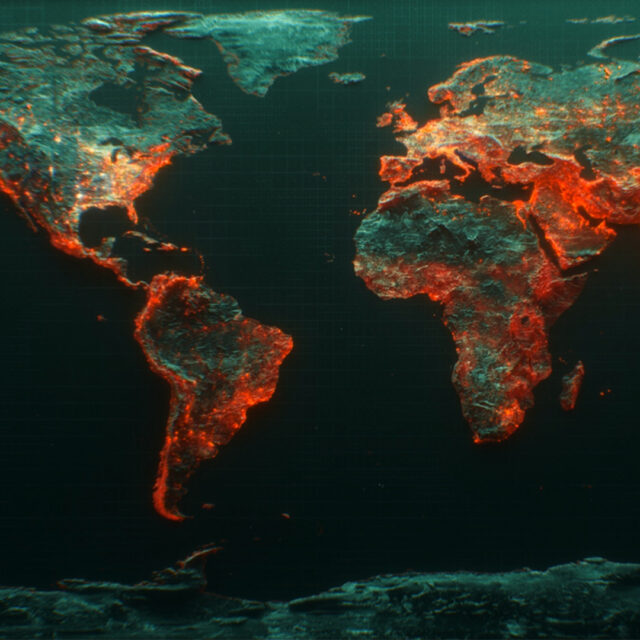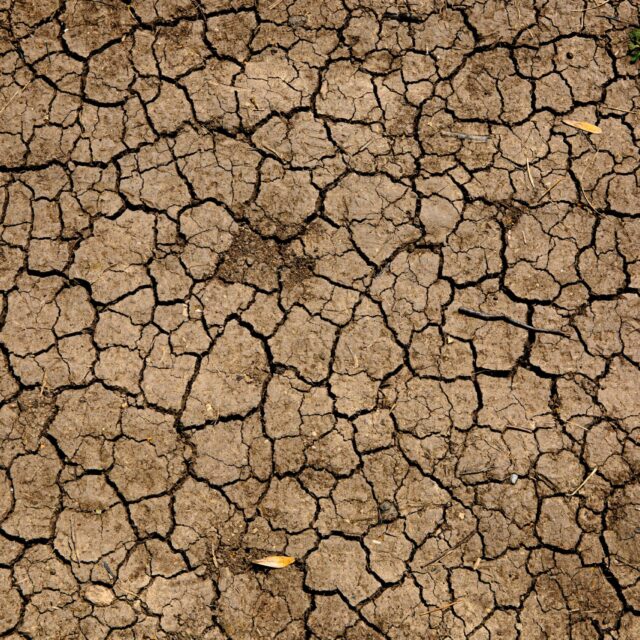New OECD projects paint a grim picture for economic growth and recovery in the world’s biggest economies. The projections focus on two scenarios, one in which there is a second outbreak of COVID-19 infections before the end of 2020, with global lockdowns reinstated, and the other where a new wave is avoided.
But our Executive Director of Policy David McNair asked a different question: how will the aftershocks of COVID-19 affect the world’s poorest countries?
THREAD: 👉 Lots in the news today about @OECD economic growth projections. But what are the aftershocks for African countries? pic.twitter.com/owNhlbGE7J
— david_mcnair (@David_McNair) June 12, 2020
Government measures around the world have been successful in curbing the curve of the virus and reducing the overall death toll — but this has meant a freeze in economic growth, as well as education and inequality.
Whether there is a second outbreak of the virus or not, damage has already been done, and there will be long-lasting and significant global consequences, as can be seen in the image below.

COVID-19 is still spreading rapidly throughout the world, the worst of which can be seen in the African continent and this week the number of cases on the continent hit 200,000.

Worryingly, as COVID-19 continues to hit the global economy, it is predicted that aid could fall by as much as US$12 billion. This scale can be compared to if France closed its aid program altogether.

If a second wave of COVID-19 does happen, there will be further issues for the global economy, subsequently meaning aid could potentially fall by US$15 billion, which would be comparable to the EU closing its aid program entirely.
This would mean that global economic output could reduce by 7.6% this year and only increase by 2.8% in 2021. The OECD unemployment rate is also close to doubling to 10%, with only a slight reparation of jobs by 2021.
What does this loss in the global economy really mean?
In real terms, the impact that the reduction of aid due to the COVID-19 pandemic’s economic crisis causes:
- 3.6 million more hungry people
- 3.8 million more children being malnourished
- 5 million children without basic education
- 430 thousand deaths from AIDS, TB, and Malaria
- 84 million children without essential vaccines
Migrant remittances
When looking at migrant remittances, these are five times the value of aid, but have fallen by as much as 23% during the pandemic. The global lockdowns implemented by governments and the subsequent recessions limit the money migrants can send home. This decline in current remittances is approximately equal to 100% of foreign aid.
The countries around the world that send the most money to Africa are the US, Saudi Arabia, France, and the UK. In order to help with the current crisis, governments could make it cheaper to send money home and also protect migrant incomes.
The US, Saudi Arabia, France and the UK are the big players when it comes to sending money to Africa. Making it cheaper to send money home and protecting migrant incomes would help. pic.twitter.com/jYYrBoN1RC
— david_mcnair (@David_McNair) June 12, 2020
Food security
The reality of the COVID-19 crisis means that the number of people currently living with acute hunger could double by the end of 2020.
Currently, in sub-Saharan Africa, 1 in every 5 people is undernourished and due to the pandemic it is likely that food imports could fall by a quarter in this year. In Ethiopia and Nigeria, nearly 60% of consumption expenditure is spent on food. More than 85% of Senegalese have reported income loss, and over a third are eating less food. Read more in our blog on “How to prevent the COVID-19 pandemic from becoming a hunger epidemic.”
Global debt
In sub-Saharan Africa, 30 countries spend more on public debt than servicing public health. In fact, the Gambia spends nine times its health budget on debt. The below image shows the debt to select lenders, looking at the percentage of GDP.

Whilst the G20’s debt relief deal is good news, it covers only a third of the debt repayments owed by the poorest countries this year. The current deal only covers bilateral debt (loans from other governments), which makes up about half of total debt service for these countries. Debt to multilateral institutions and private debt, owed to bondholders and commercial banks, make up another US$24 billion.
Here’s our video on why debt relief is so crucial right now.
So what needs to be done in order to help solve this?
We need the World Bank to really step up its actions to help reduce debt and create a stimulus package for Africa.
We also need the G20 finance ministers to back the creation of special drawing rights to fund a stimulus plan for Africa. We break down what you need to know on the G20 debt relief programme in our video.
Not only this, but we additionally need the help of the media to sound the alarm on the aftershocks of COVID-19 for Africa.
Freeing up the rest of the debt service is crucial to give the most flexibility to governments, and to ensure that money saved from bilateral debt relief isn’t being used to finance debt payments to multilateral or private creditors. No country should be faced with the impossible choice of saving lives or making debt repayments during this pandemic.
Find out more about what can be done to help the COVID-19 debt crisis in our article on “Where we go from here on COVID-19 debt relief?”
ONE has also created an Africa COVID Tracker so that information on the health, economic, and social impacts of the virus on African countries is easily accessible, all in one place. The tracker includes a wide range of data to help the world better understand where resource gaps exist, how the economies of African countries are being impacted, and how societies and the individuals living within them are affected. View the tracker here.
Catch up on ONE Campaign’s Executive Director David McNair full analysis here.



